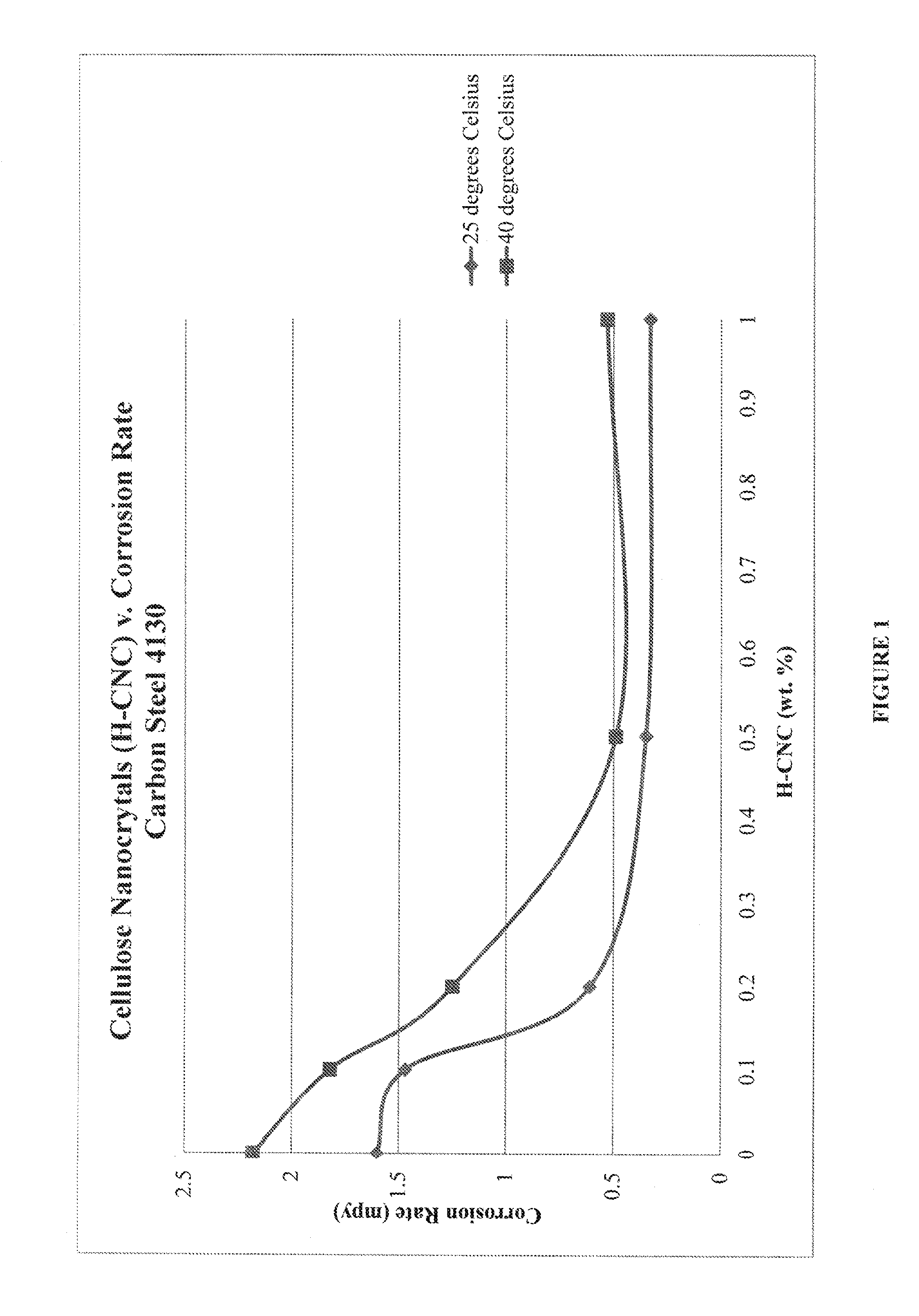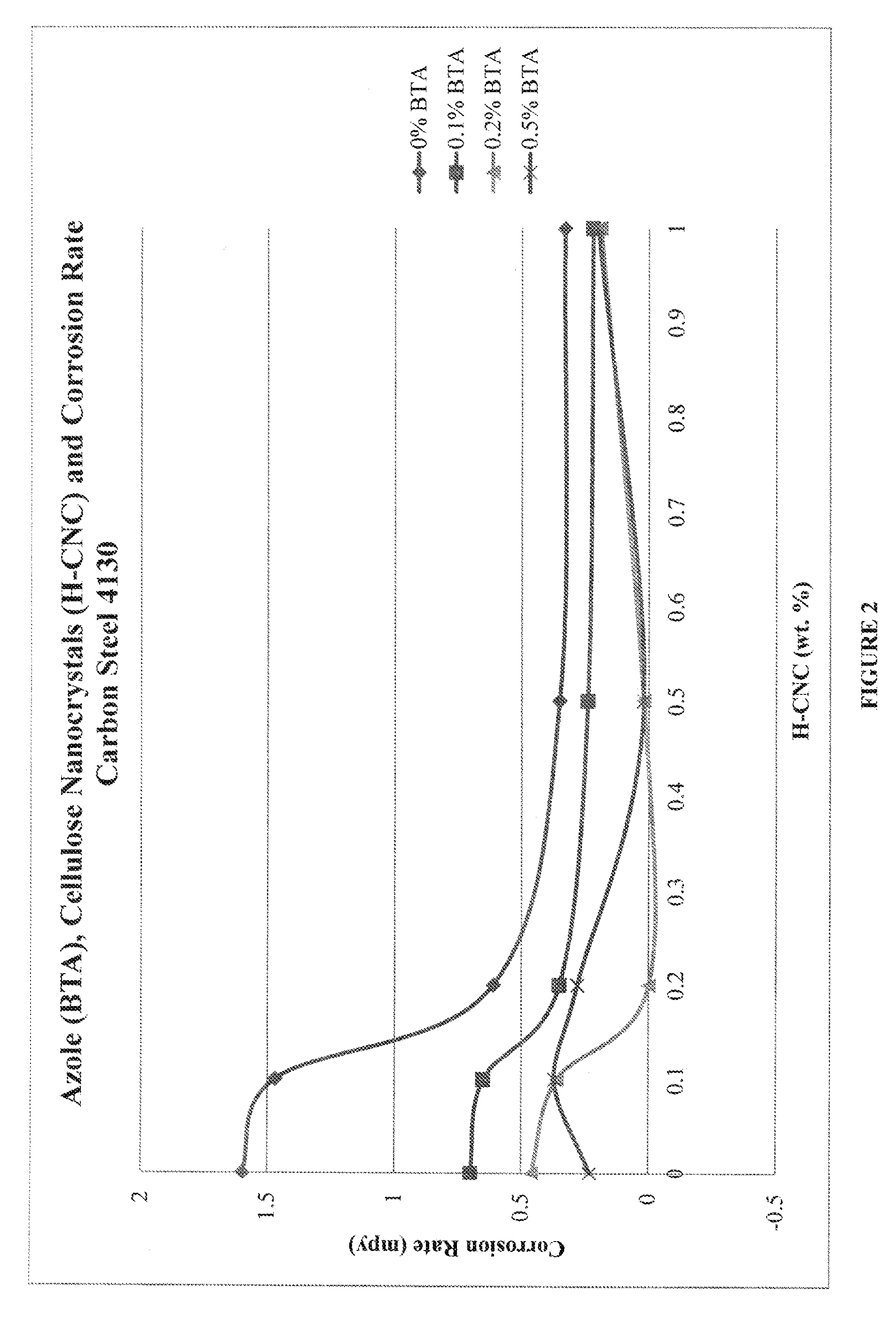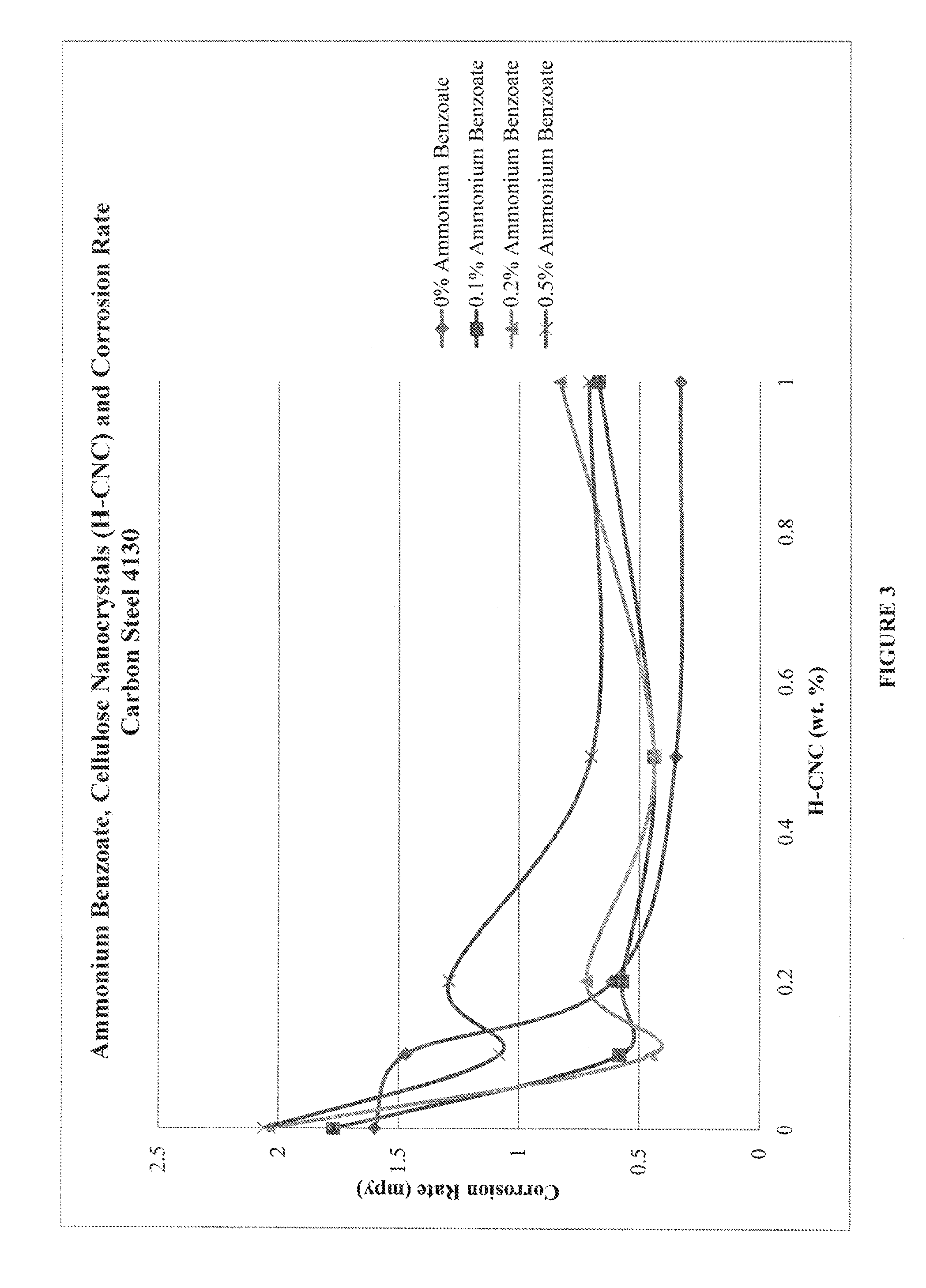Corrosion inhibitor comprising cellulose nanocrystals and cellulose nanocrystals in combination with a corrosion inhibitor
- Summary
- Abstract
- Description
- Claims
- Application Information
AI Technical Summary
Benefits of technology
Problems solved by technology
Method used
Image
Examples
example 1
[0019]Corrosion rates were obtained by immersing coupons of ferrous metal, in this example a common steel in this case carbon steel 4130, in typical seawater compositions for 34 days and then removing the coupons. The loss of the mass of the coupons arising from the corrosion was then measured. The coupons were tested at an ambient temperature of approximately 25 degrees Celsius. The coupons were kept within jars, with each jar having a lid with an aperture extending therethrough.
[0020]The masses of the coupons were determined before and after the 34 day period to an accuracy of ±10−5 grams. Mils per year (mpy) rates were obtained thereby following the protocol outlined in the NACE International Corrosion Engineers Reference Book, 2nd Edition, as set out on pages 78 and 79 therein. This book may be obtained at NACE International, which has an address at 1440 South Creek Drive, Houston, Tex., 7084-4906, USA.
[0021]Each of the jars contained a carrier, in this example in the form of wa...
example 2
[0027]Corrosion rates were obtained by immersing coupons of non-ferrous metals, in this example aluminium, in this case aluminium 2024-T3, and brass, in this case UNS C27000 Yellow Brass, in typical seawater compositions. The coupons were tested at an ambient temperature of approximately 25 degrees Celsius and were kept within sealed jars in this example. The masses of the coupons were determined before and after a 32 day period to an accuracy of ±10−5 grams. Mils per year (mpy) rates were obtained thereby following the protocol outlined in the NACE International Corrosion Engineers Reference Book, 2nd Edition, as set out on pages 78 and 79 therein.
[0028]In this example, each of the jars contained a carrier in the form of 500 grams of water. Each of the jars also included 25 grams of sea salt. Each jar thus had sea salt in an amount of 5 percent by weight of the carrier. Dried, salt form cellulose nanocrystals, in this example sodium-form cellulose nanocrystals (Na—CNC), were added ...
example 3
[0032]Corrosion rates were measured by immersing two sets of coupons of steel (carbon steel 4130) in typical seawater compositions. The loss of mass of the coupons due to corrosion was then measured after a set amount of days, in this example 34 days. One set of coupons was tested at an ambient temperature of approximately 25 degrees Celsius. The other set of coupons was tested within an enclosure at an elevated temperature of approximately 40 degrees Celsius. The coupons were kept within jars, with each jar having a lid with an aperture extending therethrough.
[0033]The masses of the coupons were determined before and after the 34 day period to an accuracy of ±10−5 grams in a manner substantially identical to that set out in Example 1. Mils per year (mpy) rates were obtained thereby following the protocol outlined in the NACE International Corrosion Engineers Reference Book, 2nd Edition, as set out on pages 78 and 79 therein. In this example, each of the jars contained a carrier in ...
PUM
| Property | Measurement | Unit |
|---|---|---|
| Percent by mass | aaaaa | aaaaa |
| Percent by mass | aaaaa | aaaaa |
| Percent by mass | aaaaa | aaaaa |
Abstract
Description
Claims
Application Information
 Login to View More
Login to View More - R&D
- Intellectual Property
- Life Sciences
- Materials
- Tech Scout
- Unparalleled Data Quality
- Higher Quality Content
- 60% Fewer Hallucinations
Browse by: Latest US Patents, China's latest patents, Technical Efficacy Thesaurus, Application Domain, Technology Topic, Popular Technical Reports.
© 2025 PatSnap. All rights reserved.Legal|Privacy policy|Modern Slavery Act Transparency Statement|Sitemap|About US| Contact US: help@patsnap.com



